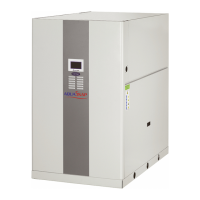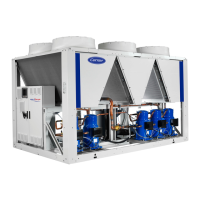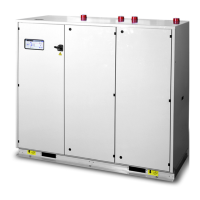68
20.12 - Compressors
The compressors do not require any specific maintenance.
Nevertheless the preventive system maintenance operations
prevent specic compressor problems. The following periodic
preventive maintenance checks are strongly recommended:
- Check the operating conditions (evaporating temperature,
condensing temperature, discharge temperature, heat
exchanger temperature difference, superheat, subcooling).
These operating parameters must always be within the
compressor operating range.
- Check that the safety devices are all operational and correctly
controlled.
- Check oil level and quality. If there is a colour change in the
sight glass, check the oil quality. This may include an acidity
test, moisture control, a spectrometric analysis etc.
- Check the leak tightness of the refrigerant circuit.
- Check the compressor motor power input, as well as the
voltage imbalance between phases.
- Check the tightening of all electrical connections.
- Ensure that the compressor is clean and runs correctly; verify
that there is no rust on the compressor shell and no corrosion
or oxydation at the electrical connections and the piping.
ATTENTION: The compressor and piping surface temperatures
canincertaincasesexceed100°Candcauseburns.Particular
caution is required during maintenance opera-tions. At the same
time, when the compressor is in operation, the surface
temperaturescanalsobeverycold(downto-15°Cforunits
with a low leaving water temperature), and can cause frost burns.
20.13 - Evaporator and condenser maintenance
There is no particular maintenance necessary on the plate heat
exchanger. Check:
- That the insulating foam has not become detached or
damaged during work on the units
- That the entering and leaving water temperature sensors are
well connected
- The cleanliness on the water heat exchanger side (no signs
of leaks).
- That the periodic inspections required by local regulations
have been carried out.
20.14 - Corrosion check
All metallic parts of the unit (chassis, casing panels, control boxes,
heat exchangers etc.) are protected against corrosion by a coating
of powder or liquid paint. To prevent the risk of blistering corrosion
that can appear when moisture penetrates under the protective
coatings, it is necessary to carry out periodic checks of the coating
(paint) condition.
20 - MAINTENANCE

